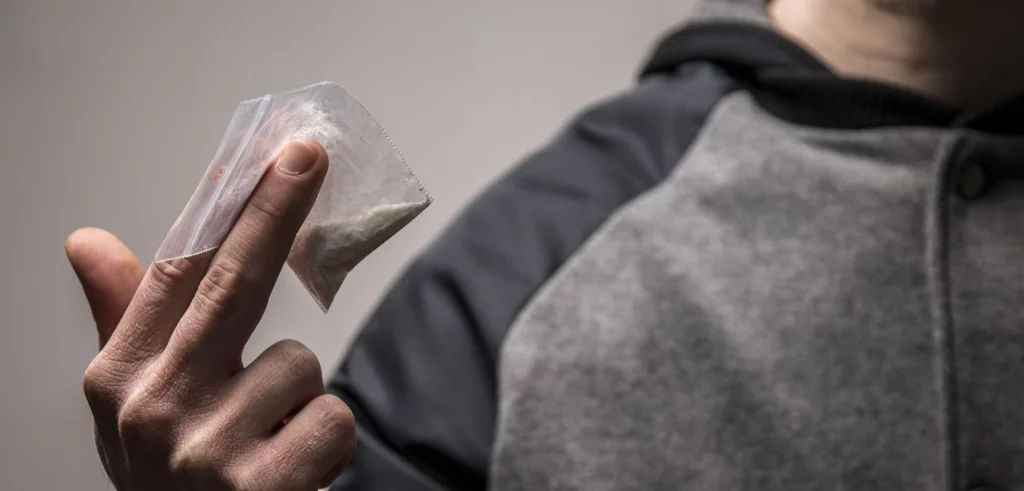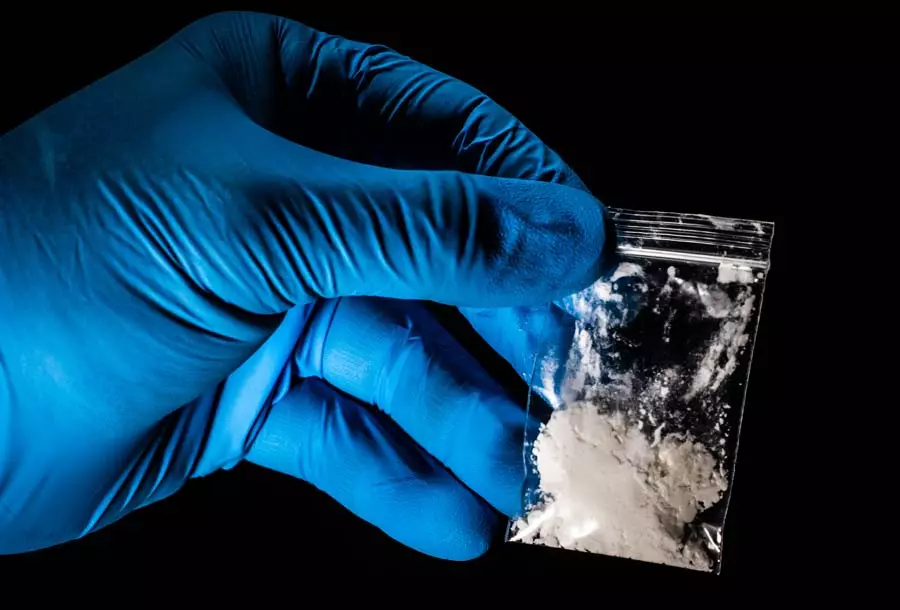Why is Fentanyl so Dangerous?
Table of Contents
- Why is Fentanyl so Dangerous?
- The Early History of Fentanyl
- What is Fentanyl and What is it Used For?
- The Dangers of Fentanyl
- What Happens When Someone Overdoses on Fentanyl?
- The Risks of Chemical Cocktails Containing Fentanyl
- The Reasons for Fentanyl Addiction
- Finding Treatment for Fentanyl Addiction
- The Levels of Care in Addiction Treatment
- Freedom from Fentanyl: Found Here
- Medically Reviewed By
This synthetic opioid drug became more widely known when legendary musician and singer Prince died from an overdose of this very potent drug. The dangers of Fentanyl addiction reach far and wide as the death toll continues to climb when Fentanyl is involved. We are even more susceptible to falling prey to fentanyl addiction today than we were when it was first created, especially with its spread as an adulterant in many other drugs as well.
Originally designed as an intravenous anesthetic in 1959, it burst onto the scene in the 1960s and was used as a replacement for morphine in the operating theatre. In its heyday, it was one of the most potent anesthetics known to doctors. It was used in combination with other anesthetics to create a “total sedative” that could be used in a wide range of cases. In 1968, the FDA approved it for use in the US. The approval did have some stipulations for its use.
By mixing fentanyl with another drug, droperidol, the FDA sought to minimize the drug’s use recreationally. Droperidol was reputed to cause a “bad trip” if taken as a recreational drug, and so the mixture of droperidol and fentanyl at a ratio of 50:1 was proposed to minimize the abuse of the substance by prescribed patients.
Keep reading to find out more about the dangers of fentanyl in America today, and how to find help for addiction to this potent and lethal narcotic.
The Early History of Fentanyl
In the 70s and 80s, fentanyl became a star of the operating theater, with massive doses being given to patients as a sedative. However, its use wasn’t constrained to the operating theater, and 1972 saw the first death associated with fentanyl overdose. Research into better opioid delivery technologies made it much easier to deliver fentanyl directly to the bloodstream. This resulted in more and more people suffering from fentanyl overdoses because it was so easy to get it into the body. With new technology came new ways of experimenting with the drug.
It was only in the late 2000s that fentanyl’s real danger became obvious. A 2005 study done by the FDA found that several doctors were inappropriately prescribing a subdermal patch and that patients were misusing it. This came as a direct result of deaths stemming from an overdose. Street use of the drug and the difficulty in getting prescriptions led to a roaring black market that dealt in manufactured alternatives.
Mexican Labs and The Rise of Fentanyl Manufacturing
A raid on a single Mexican lab in 2006 slowed the drug’s spread for a while, but eventually, it gained popularity again as other drug labs took up the mantle. Around 2013, street use of the drug soared again, followed by a spate of overdose deaths. Fentanyl was being sold on the street as heroin, leading to overdoses through regular use. Fatalities increased year after year, and before long, the Drug Enforcement Administration realized it had a problem on its hands. The number of deaths associated with fentanyl became even more prominent and has continued to increase year after year.
Overdose deaths from illicitly manufactured fentanyl have increased recently by 80 percent year over year, and reached a record of over 100,000 overdoses due to synthetic opioids from March 2020 to March 2021, forming a key answer to the question, “Why is Fentanyl so Dangerous?”
What is Fentanyl and What is it Used For?
Fentanyl belongs to a family of prescription opioids used to treat chronic and severe pain. The pharmaceutical grade is 50 to 100 times more powerful than morphine. It is a schedule 2 controlled drug and is most commonly used in treating post-surgical pain. As you can imagine, at that strength, it wouldn’t take much to very seriously injure or kill someone.
Prescription Fentanyl is also known as Actiq, Duragesic, and Sublimaze. On the street, heroin is laced with Fentanyl and goes by many names including Apache, China Girl, China White, Dance Fever, Friend, Goodfella, Jackpot, Murder 8, TNT, and Tango and Cash. This drug can be snorted, smoked, swallowed, or even absorbed through the skin.
The Dangers of Fentanyl
Fentanyl addiction is much like heroin and other opioids which bind the body’s opioid receptors. These opioid receptors are located in the brain and control the body’s pain and emotion. The use of this drug increases the dopamine levels in the reward area of the brain which makes the user feel relaxed or euphoric. Just as with other opioids, many people fall into this drug abuse as a way of trying to self-medicate and treat chronic pain. The risk of fentanyl overdose is real.
It is important to remember that fentanyl addiction is such a large issue, party because of the fact that it is a synthetic opioid. In essence, this means that, unlike other drugs, or even other opioid drugs, fentanyl has an extremely high potency. Even small doses of the drug can cause overdose and even death.
As you can or may have heard, one of the dangers of taking Fentanyl is that it takes very little to get the same potency as heroin. When heroin is cut with Fentanyl, the chances of deadly reactions are dramatically increased. This is a dangerous combination because opioid receptors are also found in the areas of the brain that control your breathing. Mixing fentanyl with other illicit drugs can be a fatal mistake.
Rolling the Dice With Every Use
High doses of opioids or extremely potent doses of Fentanyl or heroin cut with Fentanyl can cause the user to stop breathing. When drugs are sold on the street, the buyer has no idea what has been mixed together. Mixing fentanyl with heroin, cocaine, or other drugs and significantly increases the potential danger of using the illicit drugs. This accounts for a large amount of drug overdose deaths.
A study conducted by the CDC shows two thirds of opioid overdose cases tested positive for Fentanyl. The participants also indicated that Fentanyl powder is available on the streets and is easily obtained and mixed with heroin. Death records in the study show that 83 percent of deaths involved the powder form of Fentanyl. Thirty percent of the surveyed group said they don’t do drugs alone.
What Happens When Someone Overdoses on Fentanyl?
Fentanyl overdose is almost instantaneous. The symptoms can be virtually analogous to a heroin overdose or an overdose on other opioid drugs. The first thing that happens is your lips turn blue. Blue lips are followed by gurgling sounds due to the inability to breathe. The next step is foaming at the mouth, confusion, and seizure-like activity.
Overdose is treated by naloxone or Narcan which comes in the form of nasal sprays. In eighty-three percent of the cases presented, a single dose of naloxone was not enough to stop the overdose.

A Cautionary Tale Regarding Fentanyl Exposure
To demonstrate the potency of illicit fentanyl, a police officer in Ohio was involved in a drug bust early in the day. After using gloves to search the suspect vehicle and collect the evidence he finished out his day. When he was preparing to leave the police station he used his bare hand to brush some white powder off of his uniform.
A couple of minutes later, “I slowly felt my body shutting down, I could hear people talking to me but couldn’t respond” officer Green said. EMS was called and treated the officer with a dose of Narcan while transporting him to the emergency room. It should never be underestimated just how much of a potent opioid fentanyl is.
There is a large variety of symptoms of a Fentanyl overdose. These symptoms include confusion, dizziness, pale face, difficulty speaking or walking, lips and extremities turning blue, vomiting, pinpoint pupils, seizures, low blood pressure, slow heart rate, coma, difficulty breathing, respiratory arrest, and death. It is important to get medical attention immediately when symptoms begin in order to minimize long-term damage and the possibility of fatality.
Even more frightening than this level of toxicity is the even greater potential for overdose with other drugs and synthetic opioids such as Carfentanil, a cousin to fentanyl used to treat pain in elephants and other massive animals and consequently much more potent.
The Risks of Chemical Cocktails Containing Fentanyl
Mixing drugs can be extremely dangerous and should be avoided at all costs. Even lesser-known, but emerging as a contaminant for opioids and heroin, is the ISO drug, especially in the state of Florida.
The sheer extent to which fentanyl is mixed with other prescription opioids or even other drugs is alarming. More than one person has died from an accidental fentanyl overdose because of the presence of other drugs in the system at the same time. Taking fentanyl routinely can result in
Opioid withdrawal symptoms can be extremely debilitating. In fact, the harshness of these symptoms are part of what make fentanyl dangerous. Many people struggling with a substance use disorder, no matter how bad the physical symptoms get, would rather continue to take it as opposed to seek the help of medical professionals.
Fentanyl addiction withdrawal symptoms are very similar to those of highly potent heroin, other opioids, or even certain prescription medications and include muscle aches; nausea; sweating; abdominal cramps; diarrhea; insomnia; and anxiety.
Rapid detox from fentanyl can be especially difficult because of its potency and short half-life. According to Kolodny, “Heroin lasts about four hours whereas fentanyl lasts about eight hours.”
The Reasons for Fentanyl Addiction
As opioid addiction, drug abuse and fentanyl overdoses become more prevalent in the United States, more people are looking for the reasons behind why some people get addicted to opioids. Some argue that it’s a physical addiction, where the body becomes used to high amounts of opioids and needs them to function normally. Others argue that it’s a psychological addiction, where the individual is developing an emotional dependency on opioids due to their effects on the brain. The truth is, both of these are factors in addiction.
People who begin taking opioids for legitimate reasons—to relieve pain (cancer patients for example) or after surgery to control pain levels, for example—can develop a physical dependence on the drugs if they continue using them long enough. But over time, most people will develop an emotional attachment to them as well; when you’re feeling depressed or anxious, it can be comforting to know that you have pills on hand that will make the negative feelings go away.
And once you’ve been taking them regularly, it can be hard to quit because you fear what will happen: anxiety and depression are likely side effects of a withdrawal syndrome that will last anywhere from weeks to months after quitting.
Finding Treatment for Fentanyl Addiction
Naloxone nasal sprays are a life-saving treatment but it can cause severe withdrawal requiring additional medical care to manage the side effects. A good treatment facility that specializes in opioid addiction is the best method to safely detox and begin the road to recovery.
There were over 33,000 opioid deaths in the United States alone last year. Drug overdose is the leading cause of accidental death in the US. If you are struggling with addiction, please get help. There are good treatment centers located all across the country. Take the first step to regaining control of your life and creating a great future.
Medical personnel will all generally advise that anyone suffering from an addiction to fentanyl, any other opioids, or any other prescription medications or drug get themselves into treatment and rehabilitation as soon as possible.
The fentanyl and drug abuse epidemic are real and it is critical to implement proper disease control when it comes to substances like this. Addiction treatment shouldn’t be an option, it should be THE option. The truth is that there are many ways to approach and receive support. Drug Abuse does not have to mean the end of one’s life, although, it certainly can. Addiction treatment works. There are countless success stories.
The Levels of Care in Addiction Treatment
Typically, the first step is the detox stage, whereby the body is purged of its physical need and dependency on the substance. In a proper treatment facility, detoxing will likely involve medical supervision and even intervention as the patient goes through the acute phase where they feel the lack of fentanyl affect the actual operation of their system.
The doctors and staff know how fentanyl works and are trained and capable of helping to reduce opioid withdrawal symptoms from the drug. This, as was discussed earlier, is one of the major barriers to people truly being rehabilitated from addiction.
The second stage of treatment is the actual rehabilitation from the drug. This is the actual therapy. Typically, behavioral therapies are introduced and utilized to help the client process the impact that the drug has had on their life, make peace with it, and develop better-coping skills and tools to avoid falling back into the habit of the drug.
Freedom from Fentanyl: Found Here
There are many different types of behavioral therapies but one of the most common used is cognitive behavioral therapy as a part of residential treatment. This typically involves coming to actively understand their own triggers, their own internal thought patterns that pull them towards the drug and learning how to navigate those murky waters.
If you or someone you know needs help with fentanyl abuse, the team of professionals at Find Addiction Rehabs is here to help. Call anytime 7 days a week 24 hours a day. Help is here!
Bryan was born in Philadelphia and remains an ardent supporter of Philadelphia sports. After attending FSU and FAU where he majored in writing, Bryan ventured out to follow in the footsteps of his idols, running straight into drug addiction. After being arrested by the President’s Secret Service, Bryan finally started to rebuild his life and beat that monkey off of his back through writing, playing music, and studying Buddhist philosophy.
Despite still having the occasional struggles with mental health, Bryan strives to be a little bit better a person each day. With the support and love from a loyal family, and kind-hearted and generous friends, Bryan tries to help people vanquish their own personal demons as he did and bring more love and beauty into a pessimistic world.




